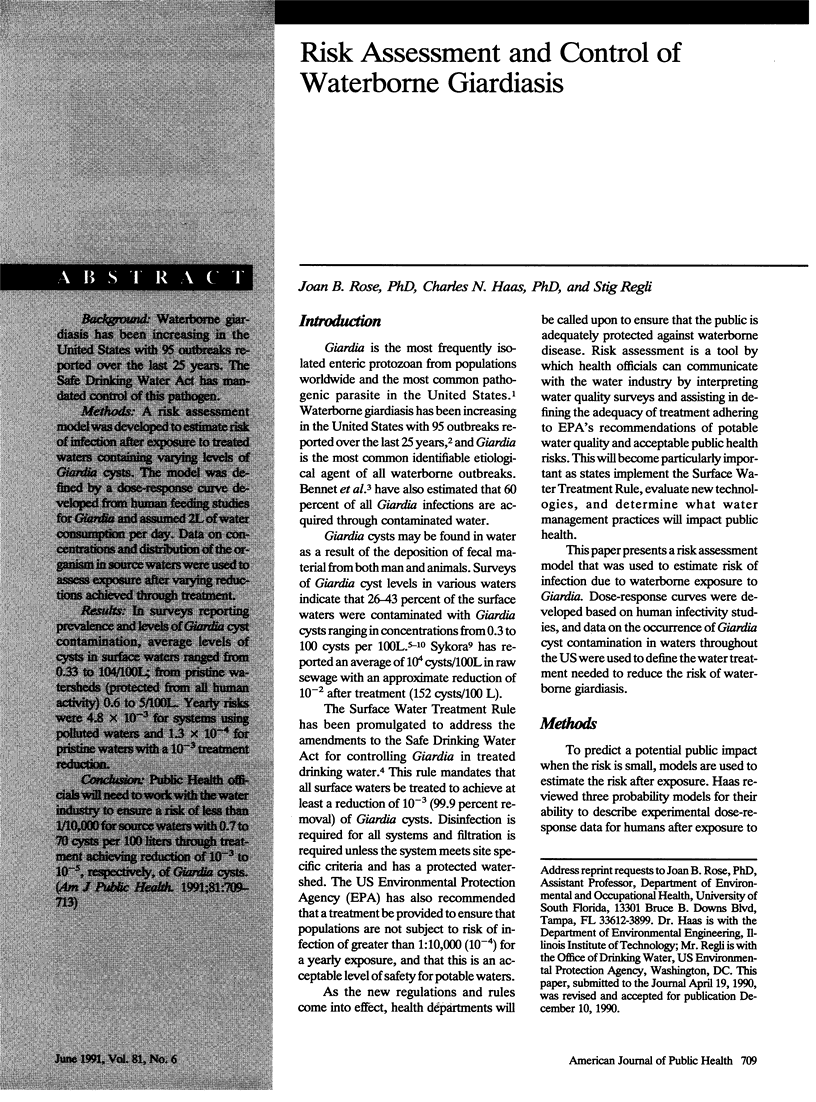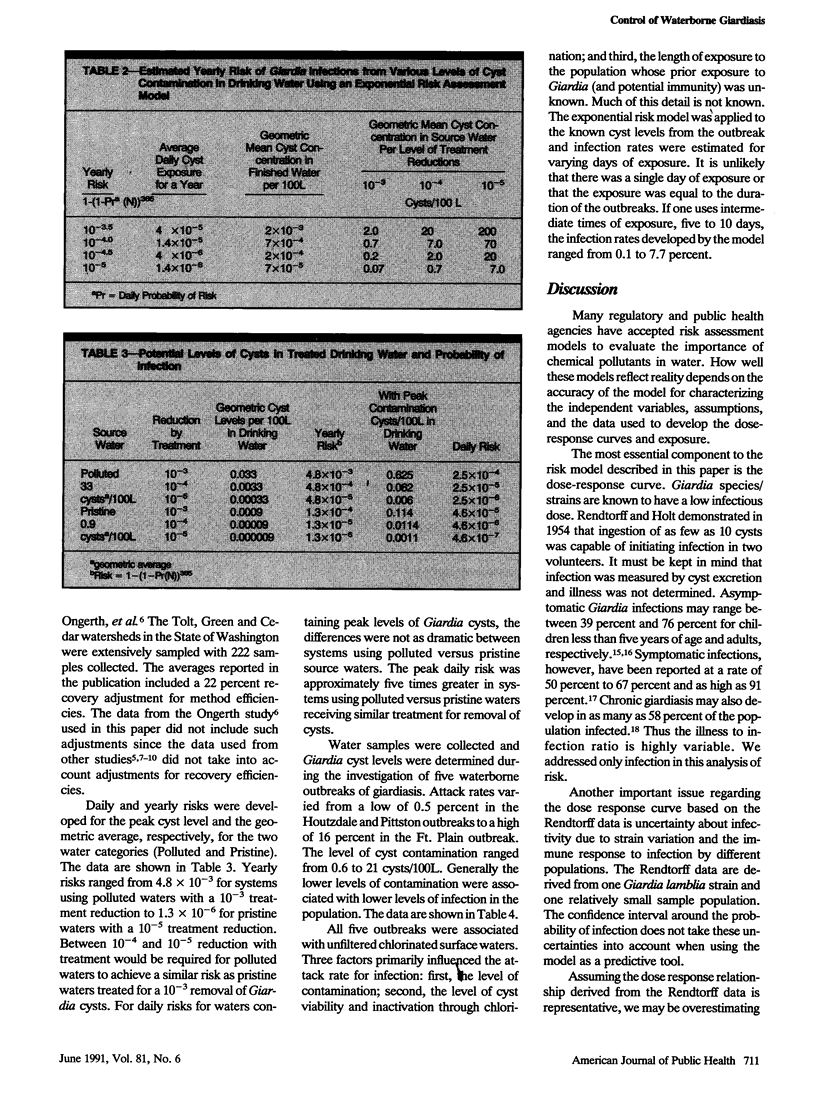Abstract
BACKGROUND: Waterborne giardiasis has been increasing in the United States with 95 outbreaks reported over the last 25 years. The Safe Drinking Water Act has mandated control of this pathogen. METHODS: A risk assessment model was developed to estimate risk of infection after exposure to treated waters containing varying levels of Giardia cysts. The model was defined by a dose-response curve developed from human feeding studies for Giardia and assumed 2L of water consumption per day. Data on concentrations and distribution of the organism in source waters were used to assess exposure after varying reductions achieved through treatment. RESULTS: In surveys reporting prevalence and levels of Giardia cyst contamination, average levels of cysts in surface waters ranged from 0.33 to 104/100L; from pristine watersheds (protected from all human activity) 0.6 to 5/100L. Yearly risks were 4.8 x 10(-3) for systems using polluted waters and 1.3 x 10(-4) for pristine waters with a 10(-3) treatment reduction. CONCLUSION: Public Health officials will need to work with the water industry to ensure a risk of less than 1/10,000 for source waters with 0.7 to 70 cysts per 100 liters through treatment achieving reduction of 10(-3) to 10(-5), respectively, of Giardia cysts.
Full text
PDF




Selected References
These references are in PubMed. This may not be the complete list of references from this article.
- Chester A. C., MacMurray F. G., Restifo M. D., Mann O. Giardiasis as a chronic disease. Dig Dis Sci. 1985 Mar;30(3):215–218. doi: 10.1007/BF01347886. [DOI] [PubMed] [Google Scholar]
- Craft J. C. Giardia and giardiasis in childhood. Pediatr Infect Dis. 1982 May-Jun;1(3):196–211. doi: 10.1097/00006454-198205000-00015. [DOI] [PubMed] [Google Scholar]
- Haas C. N. Estimation of risk due to low doses of microorganisms: a comparison of alternative methodologies. Am J Epidemiol. 1983 Oct;118(4):573–582. doi: 10.1093/oxfordjournals.aje.a113662. [DOI] [PubMed] [Google Scholar]
- Kent G. P., Greenspan J. R., Herndon J. L., Mofenson L. M., Harris J. A., Eng T. R., Waskin H. A. Epidemic giardiasis caused by a contaminated public water supply. Am J Public Health. 1988 Feb;78(2):139–143. doi: 10.2105/ajph.78.2.139. [DOI] [PMC free article] [PubMed] [Google Scholar]
- RENDTORFF R. C., HOLT C. J. The experimental transmission of human intestinal protozoan parasites. IV. Attempts to transmit Endamoeba coli and Giardia lamblia cysts by water. Am J Hyg. 1954 Nov;60(3):327–338. [PubMed] [Google Scholar]
- RENDTORFF R. C. The experimental transmission of human intestinal protozoan parasites. II. Giardia lamblia cysts given in capsules. Am J Hyg. 1954 Mar;59(2):209–220. doi: 10.1093/oxfordjournals.aje.a119634. [DOI] [PubMed] [Google Scholar]


